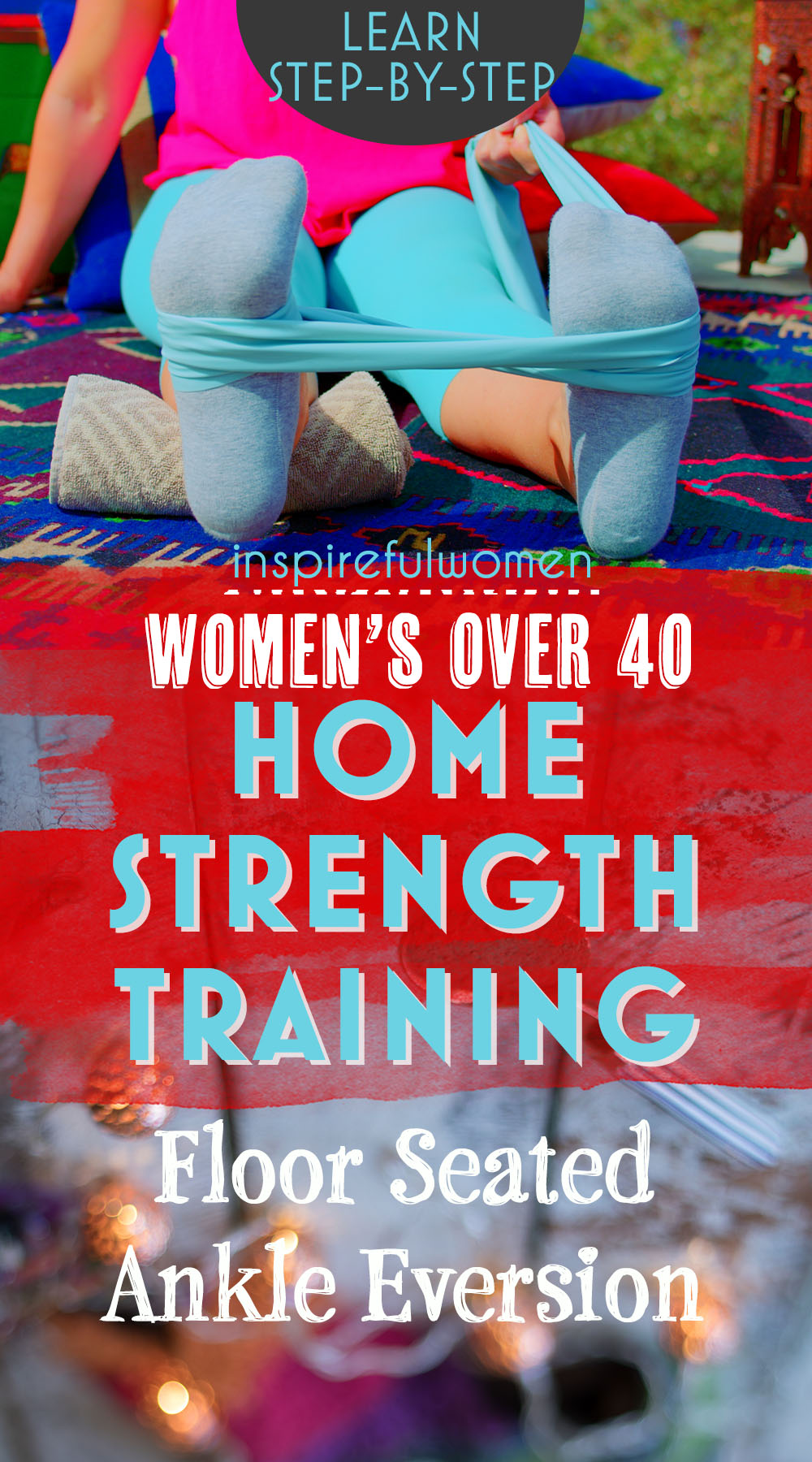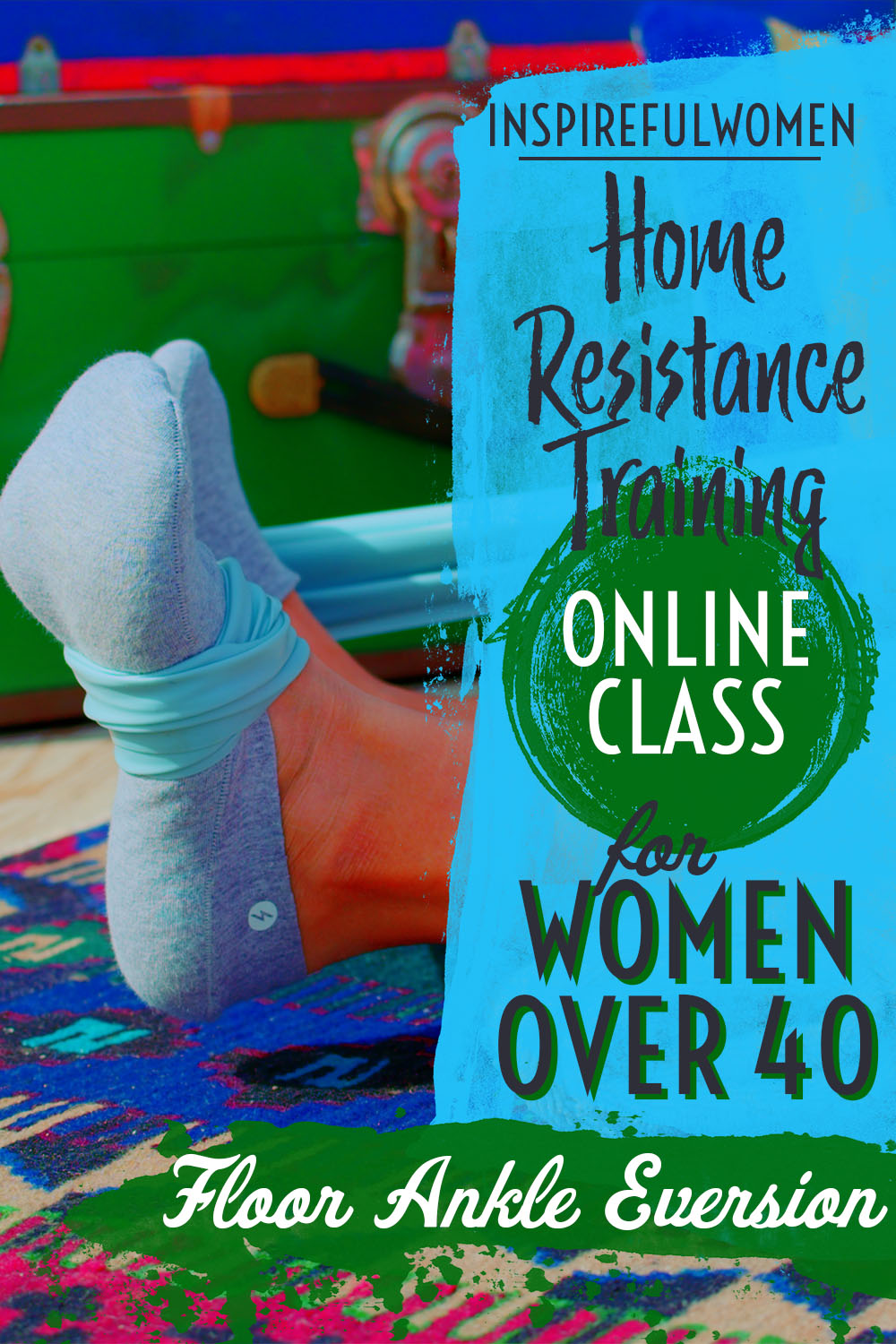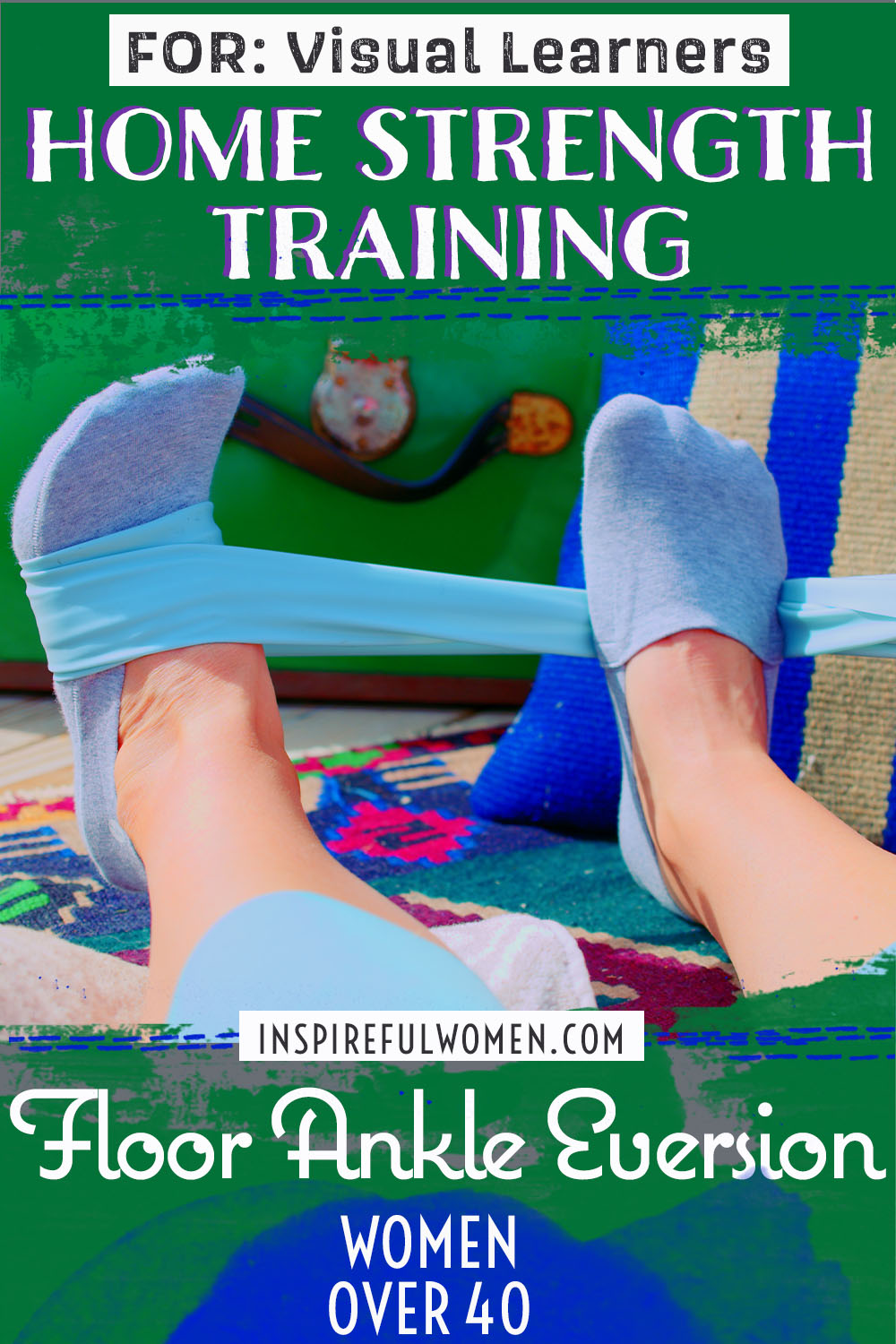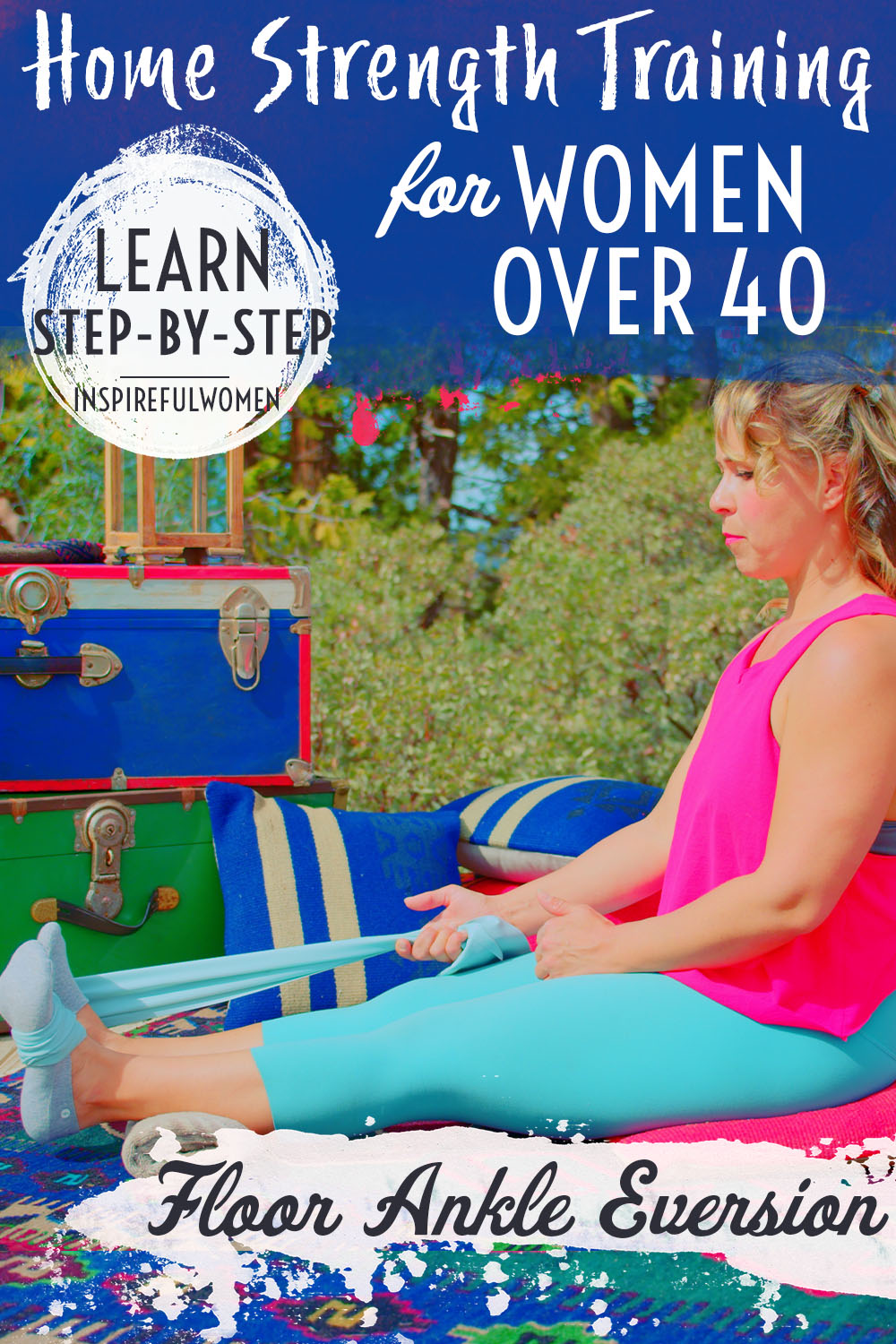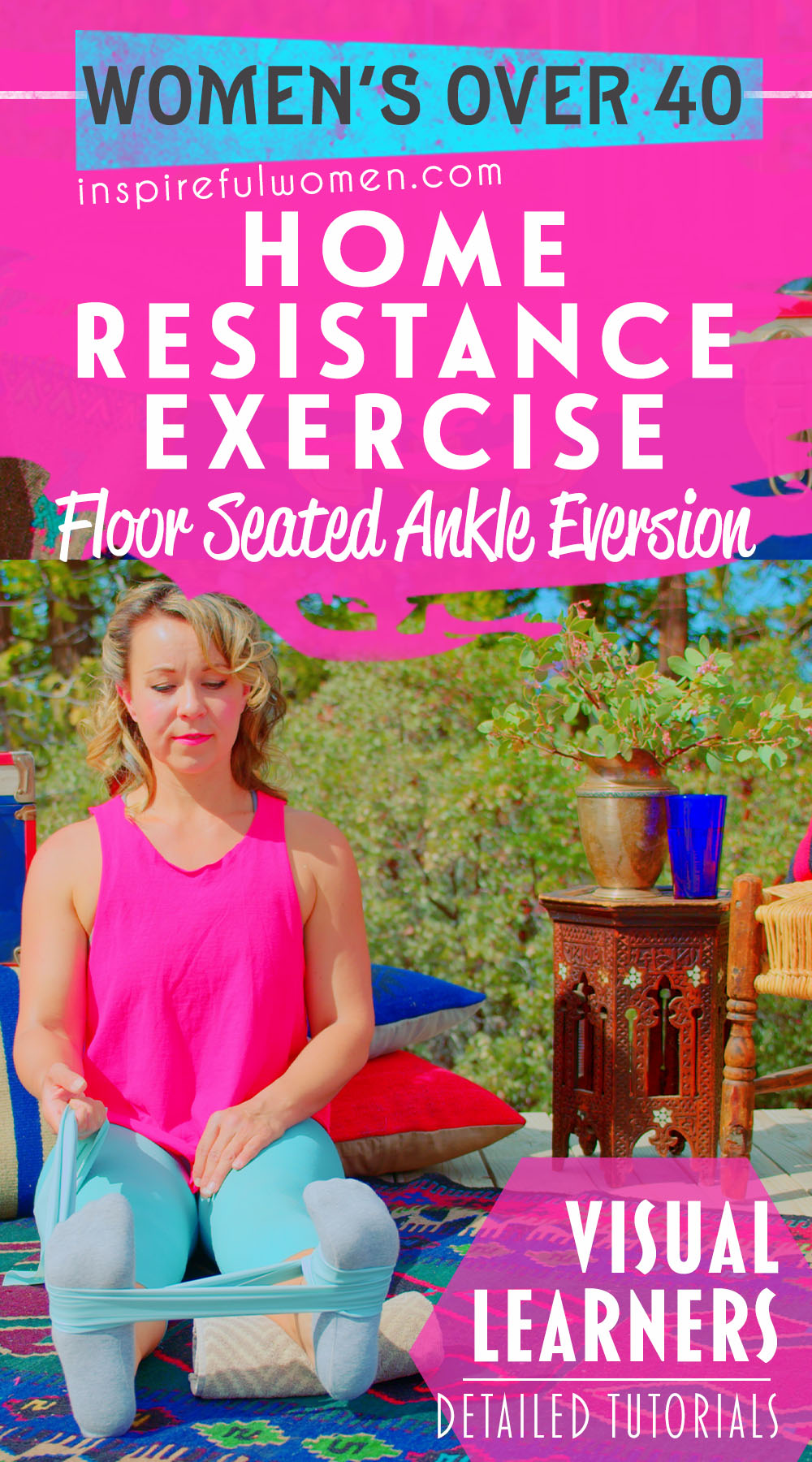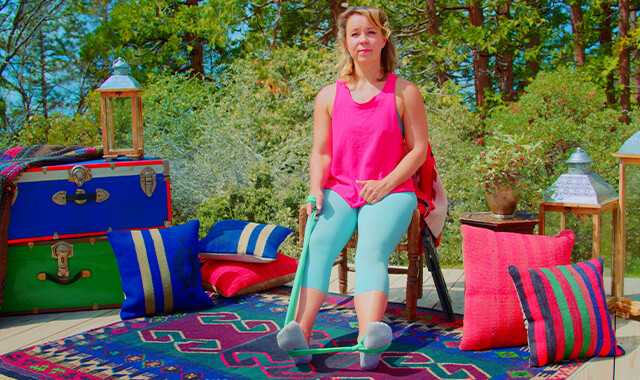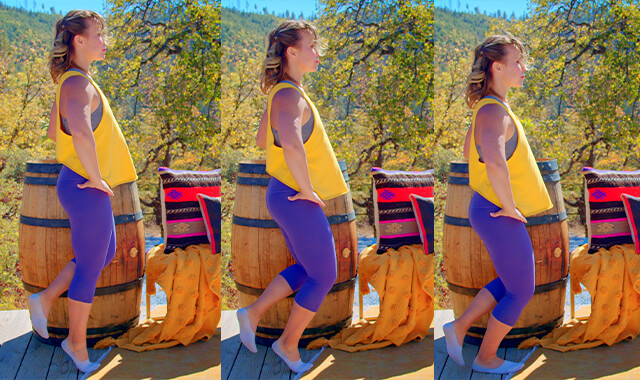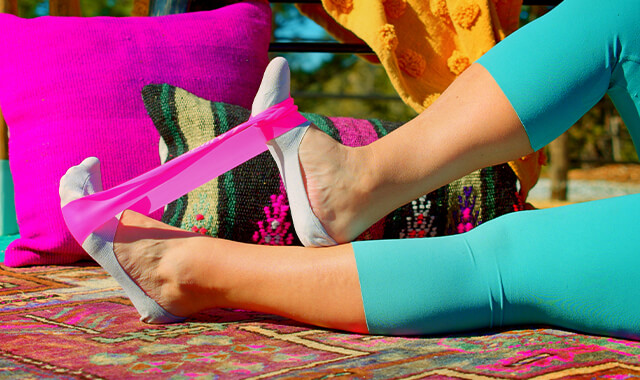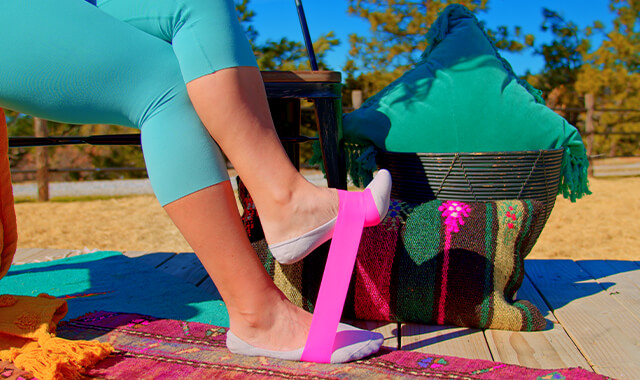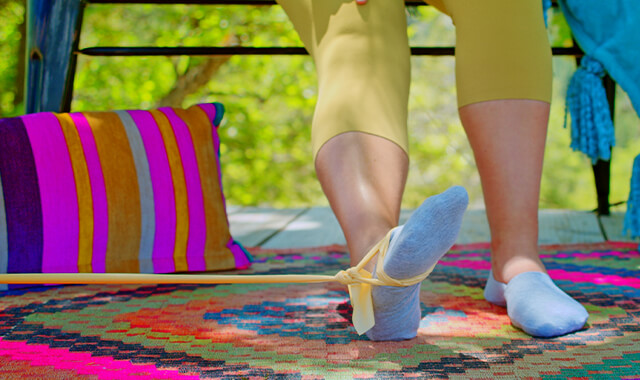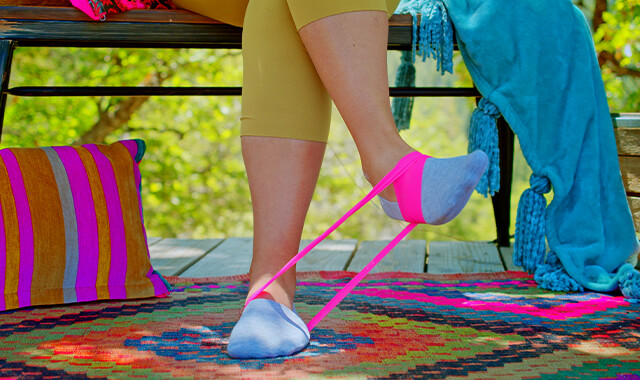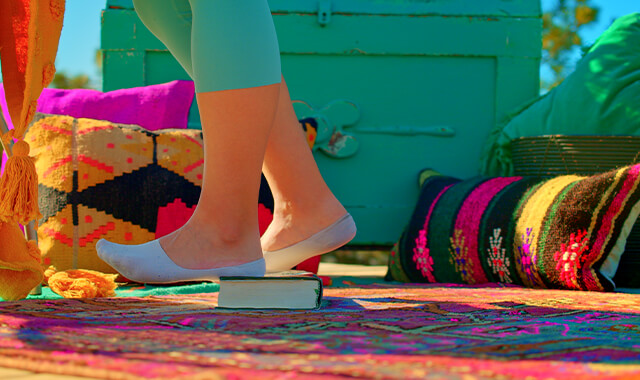Floor-Seated Ankle Eversion - Long Band
How to Do The Floor-Seated Ankle Eversion - Long Band - Ankle Strength & Mobility Exercise| In-Depth Guide [VISUAL LEARNERS] Beginner
Proper Form, Common Mistakes, & Variations | Home Resistance Training
WHAT DO YOU WANT TO SEE?
QUICK DEMO
QUICK DEMO
MUSCLES THIS WORKS
MUSCLES
MAIN MUSCLES WORKED IN the Floor-Seated Ankle Eversion - Long Band
Peroneus/fibularis Longus and Brevis
OTHER MUSCLES WORKED:
- Extensor digitorum longus
- Peroneus tertius
WHAT WE'RE DOING TODAY
WHAT & WHY
BENEFITS OF TRAINING THE Peroneus/Fibularis Longus and Brevis
WHAT
WHAT WE'RE DOING TODAY
ALL WE'RE DOING:
This is a tiny movement - just turning our foot outward.
This variation of floor-seated ankle eversion exercise uses a long band. By performing this exercise regularly, you will strengthen your ankle muscles, which are essential for maintaining balance and stability and can also help to reduce the risk of ankle injuries. This exercise along with a healthy diet can help you get rid of "cankles" aka ankle fat.
ANKLE JOINTS HAVE MUSCLES AROUND THEM TOO
This movement works muscles on the outside of our lower leg that is responsible for one of the 4 ways in which our ankle/foot can move.
Eversion is when we turn the sole of our foot outward.
The ankle and foot are pretty amazing. They need to be able to support all of your weight, keep you upright and balanced, and move you from place to place. The arch of the foot needs to be able to keep the lower leg aligned and also needs to move to maintain balance and absorb shock as the foot hits the ground. The ankle moves four main ways - pointing the toes down (plantar flexion), bending the ankles to lift the front of the foot (dorsiflexion), turning the sole of the foot in (inversion), and turning the sole of the foot out (eversion).
When you walk, the foot that swings forward lands on the heel with the weight towards the outside of the foot. As you continue to transfer your weight to this foot, the weight shifts towards the inside of the foot. This motion is eversion - the muscles work to lift the outside of the foot up to transfer the weight toward the inside of the foot. This is a small movement but it helps to absorb the forces as all of the body weight is supported by one foot.
The muscles on the outside of the lower leg act to turn the sole of the foot out. The exercises targeting these muscles are straightforward. Simply turning the bottom of the foot out away from the other leg. Although they sound easy, it is an odd movement to try to isolate, and the movement is very small, making it challenging for some people to get in the beginning.
Ankle eversion exercises can be done seated on the floor or in a chair with the legs out straight. Sitting on the floor with a folded towel under your ankle lifts the heel from the floor so that the muscles do not have to work against the friction of the floor. If this position is not comfortable, try to position yourself with your back up against a wall, or sit on a folded blanket.
WHY BOTHER DOING IT?
WHY
WHY DO WE EVEN CARE?
HELP WITH COMMON DISCOMFORT
The feet can be a source of a lot of discomfort. People suffer from painful bunions, plantar fasciitis, heel spurs, and chronic ankle sprains. With age, there is an increase in foot problems including stiffness in the toes and ankles, poor balance, slower walking speed, smaller step length, and an increased risk for falls. Many of these problems have been associated with a loss of lower leg muscle strength and ankle and foot joint muscle stiffness. These are all good reasons to include exercises for your feet in your exercise program.
BETTER WALKING ON UNEVEN GROUND
The ankle evertors play an important role in stabilizing the ankle during walking on uneven ground. Especially across the side of a slope. When the evertors are well-trained and strong you may find that you feel much more stable and secure on uneven surfaces. The evertors help to prevent the classic ankle sprains - where the foot rolls in and stretches or tears the ligaments on the outside of the ankle. After working your evertors you may notice improved balance and feeling of ankle stability.
TRAIN SOME OF THE HARDEST WORKING LITTLE MUSCLES IN THE BODY
The joints and muscles of the feet are no different than those in the other parts of the body. In fact, they may work harder than other parts of the body throughout the day. The muscles and joints of the feet and ankles are involved in all upright activity. They are responsible for keeping us balanced and allowing us to move from one place to the other. Every time the foot hits the ground, the muscles of the feet and ankles need to be positioned and move correctly to absorb the shock and transfer the forces up the leg. Since they are the first thing to hit the ground, they play a critical role in how the entire leg and spine are aligned. Pronated feet (when the arch drops down to the floor in standing) put excessive strain on the ankles, toes, knees, hips and even the spine. This can lead to wear and tear on the ligaments, tendons, and joints.
IMPROVES AWARENESS OF THESE MUSCLES FOR IMPROVED CONTROL OVER HEALTHY MOVEMENT
All the muscles that cross the ankle joint need to work together in coordination as soon as we stand up. It is important to include exercises that target the muscles on the front, back, and inside and outside of the lower leg. Improving your awareness of the muscles of the lower leg and how you can control the movement of the ankle and foot helps to prevent pain that can interfere with simple activities like standing and walking.
EVERYDAY LIFE
EVERYDAY LIFE &
MUSCLE FUNCTION
HOW WE USE OUR Ankle MUSCLES IN EVERYDAY LIFE
1. CONTROLS THE POSITION OF THE FOOT TO KEEP US UPRIGHT
- Walking, especially on uneven surfaces
- Standing on an unstable surface- helps to maintain the medial arch of the foot
2. WORKS WITH THE OTHER MUSCLES OF THE LOWER LEG FOR BALANCE AND ANKLE JOINT STABILITY
- Standing
- All upright activity
3. HELPS TO SUPPORT AND MOVE THE ARCH OF THE FOOT
- Absorbs shock during walking and running
- Healthy positioning and moving of the foot and ankle to protect the toes, foot, ankle, knee, hip, and low back from uneven stresses that result in degenerative changes or injury
STARTING POINTERS
Starting Pointers
We only have a small amount of ankle eversion. This is a simple movement but it may take a little bit of time to get it right. Remember to move from the ankle, without any movement of the leg. Think of turning the foot so the entire sole of the foot is facing away from the non-working leg.
This exercise is done on the floor, sitting with the legs out straight in front of you. If this position is not comfortable for you, put your back against the wall, bend the “non-working” leg, and/or sit on a folded blanket. You can also do the exercise sitting in a chair, but it is a little more difficult to isolate the movement to the foot and to move the foot against the friction of the heel on the floor.
HOW TO FEEL WHAT MUSCLE IS WORKING
How to Feel What Muscle is Working
When sitting, lift the leg off the floor a few inches. Keep the lifted foot close to the lower leg that is still on the floor. Bend forward and place one hand on the outside of the lower leg (of the lifted leg), a few inches beneath the knee, this is the peroneus longus muscle, the other peronei are deep and not easy to feel. Turn the sole of the foot out, facing away from the other leg. You should feel the muscle contract under your hand.
HOW TO DO THE EXERCISE
LOOKS
HOW Floor Seated Ankle Eversions - Long Band SHAPE OUR BODY
Tones and shapes the lower legs and ankles. Helps maintain a nice arch in the foot (prevents flat feet).
PROPER FORM
PROPER FORM: Floor-Seated Ankle Eversion - Long Band
EQUIPMENT, SETS & REPS
EQUIPMENT
Main set (3: Light/Med/Heavy)
X-Heavy Band (I recommend getting this too if you plan to use resistance bands frequently).
Optional folded towel or small pillow
SUGGESTED STARTING WEIGHT FOR WOMEN:
Moderate resistance bands
SETS & REPS:
2 sets of 15 reps
PACE:
Slow control out and in
BODY POSITION
BODY POSITION FOR THE Floor-Seated Ankle Eversion - Long Band
Seated on floor.
LEGS: Straight out to the front, knees facing up to the ceiling. Place a folded towel under the lower calf/ankle of your working leg - the goal is to lift your heel off the floor about one inch so that the friction between the floor and your heel will not interfere with the movement. Non working leg is also straight out in front of you, feet about hip width apart.
BAND: Take the long band & wrap it around the midfoot/arch of your working foot - loop the band around your working foot twice, then take both pieces of the band underneath the arch of your other foot, then up to hand on the opposite side.
FEET: Feet hip width apart; Keep your ankle in neutral - not pointed down or pulled back, toes pointed up. The band should be taut in the starting position.
BODY STANCE: Spine in neutral - earlobes over shoulders over hips. If you have trouble keeping your spine in neutral, place your back against a wall or sit on a folded blanket.
HANDS: Hold the ends of the band in your hand opposite your working foot.
HOW TO DO
HOW TO DO Floor-Seated Ankle Eversions - Long Band
CUE: The movement will most likely feel awkward at first. Concentrate on bending your ankle to move your entire sole - heel and toes, to face out.
Turn the bottom of your foot in so that it is facing away from the non-working leg. This is a small movement, move until you feel you meet some resistance and pause. The movement should be very controlled. More like the movement of your wrist when writing than how the biceps feel when you lift a gallon of milk.
Like a toddler turning her head away from the mashed broccoli you just offered her, & she has a bit of a stiff neck.
Control the pullout, and pause at the end of the range of motion.
Slowly control your ankle movement as you return to the starting position.
Don’t have your foot move into inversion, just come back to neutral. You want to keep these Everton muscles engaged, holding against some resistance, rather than fully relaxing between reps, to keep tension on the muscles - especially as they are intended to be used for endurance.
Repeat for the desired number of reps
Turn around to work the other side.
HOW TO SAFELY GET OUT OF THE EXERCISE
Remove the band from your foot and stand up.
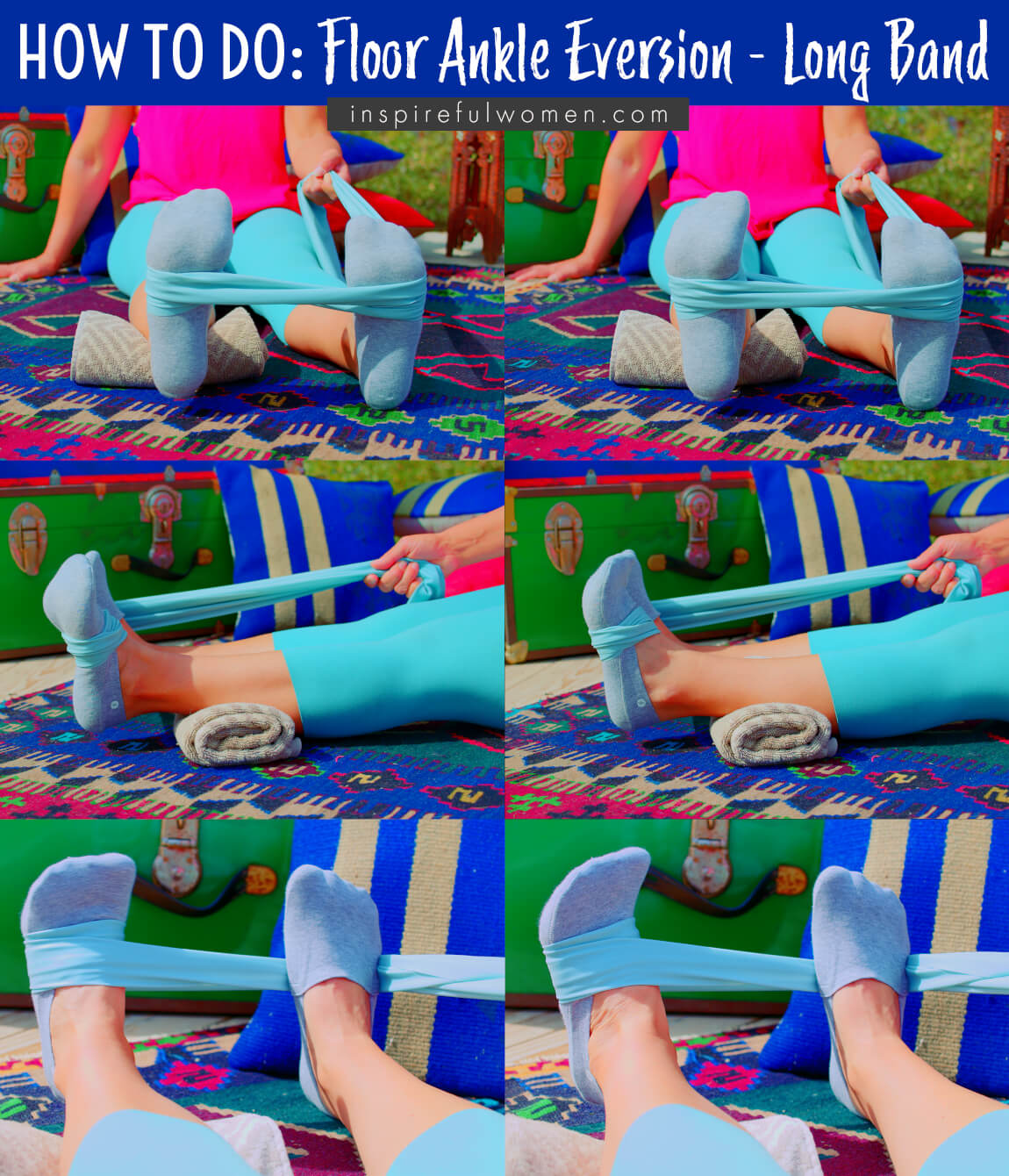

COMMON MISTAKES
COMMON MISTAKES
WHAT TO AVOID WITH Floor Seated Ankle Eversions - Long Band
KEY TIP:
Guess what? Good news! Many avoids are the same for most movements. Once you learn the basics, there's really only a few extra avoids for each individual movement.
1. Avoid Moving Your Leg
AVOID: Moving your leg instead of your foot.
WHY NOT?
- This is the most common mistake.
- Turning the sole of the foot out is not a movement that we are used to doing, and the movement is not very big.
- It is very easy to move the leg in and out instead of the foot.
WHAT TO DO:
- Make sure to keep the knee cap pointed up and to hold the leg very still.
- Focus on very controlled movement of turning the sole out.
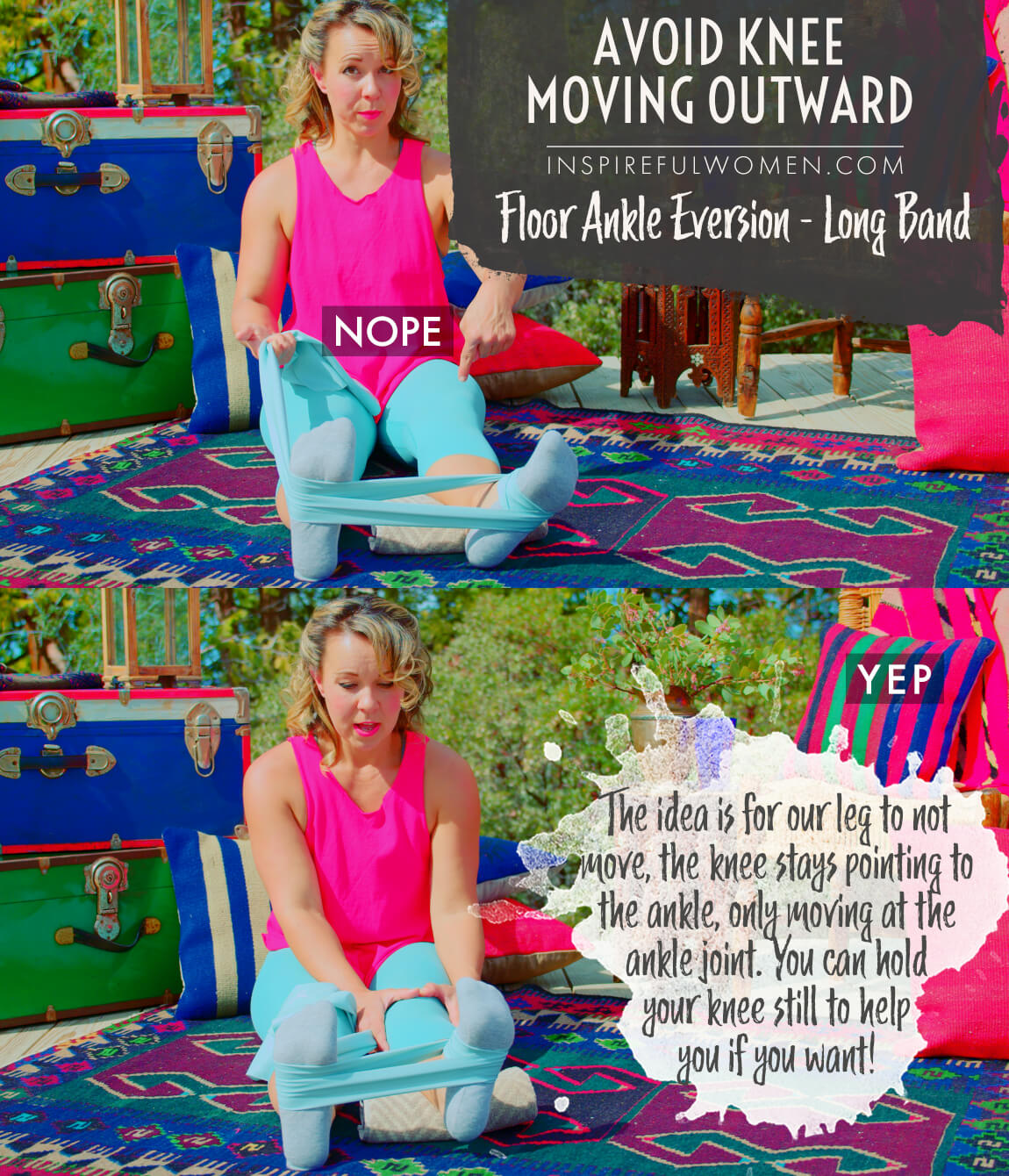
2. Avoid Not Resisting Pull Of Band
AVOID: Letting the band pull the foot back out
WHAT TO DO:
- Turning the sole of the foot out (concentric), and controlling the movement back to the starting position (eccentric), are equally important.
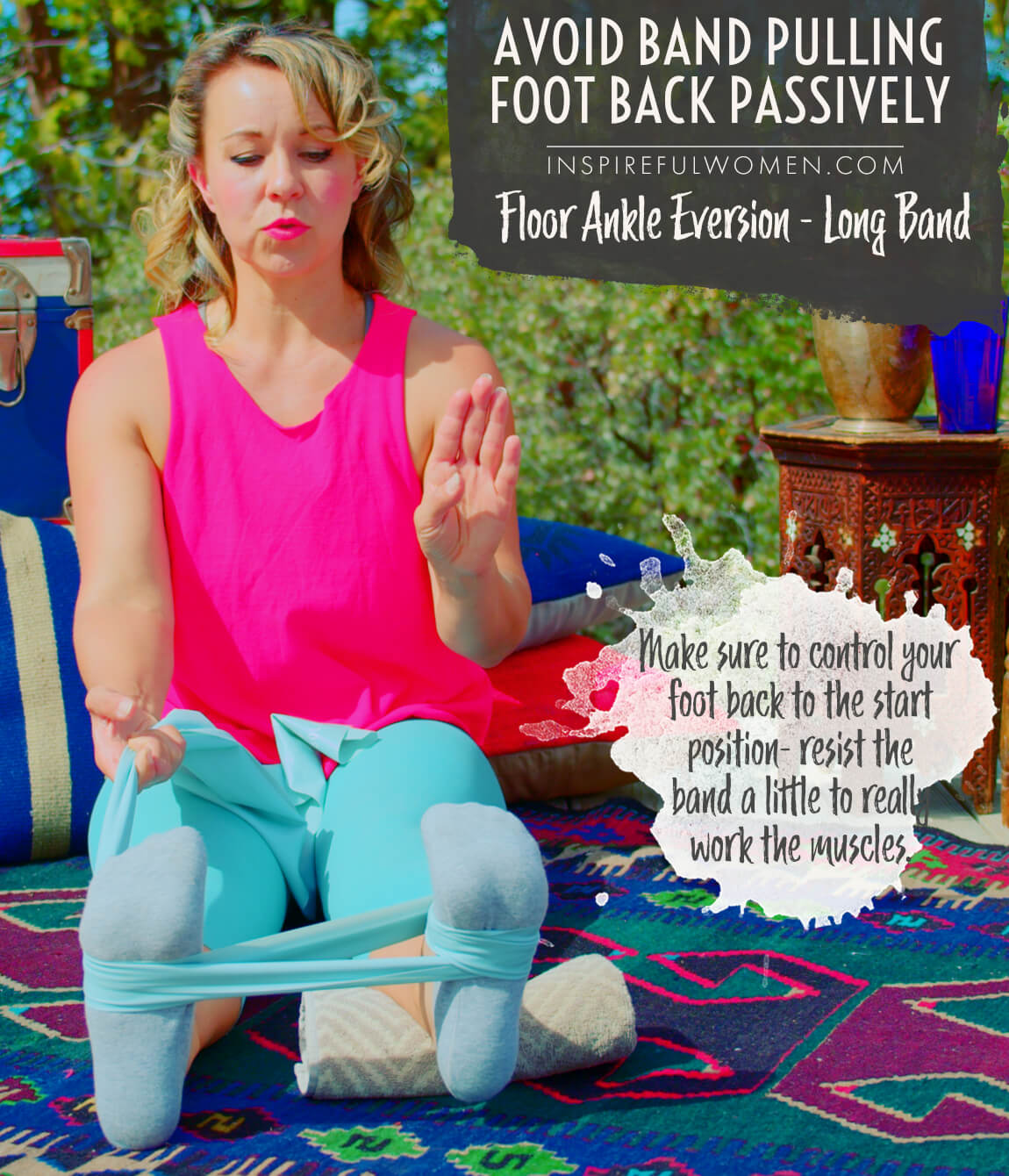
3. Avoid Dorsiflexing Ankle
AVOID: Pulling your toes up (dorsiflexing).
WHY NOT?
- This will change the muscles being used. The exercise will be more effective at strengthening all of the target muscles if the ankle is in a neutral position. When the movements are combined - eversion and dorsiflexion or plantar flexion, other muscles will be active. The goal is to try to isolate the muscle activity to the target muscles and joint movement.
WHAT TO DO:
- If you find that you are moving the ankle up try:
- Concentrating on turning the heel of the foot out (the entire sole of the foot should be turning together away from midline.
- Placing a higher towel roll under the ankle to make sure the heel is cleared from the floor.
- If you’re going to err, err on the side of a tad bit of plantar (pointed) flexion of the foot, rather than dorsiflexion, because these muscles also contribute to plantar flexion.
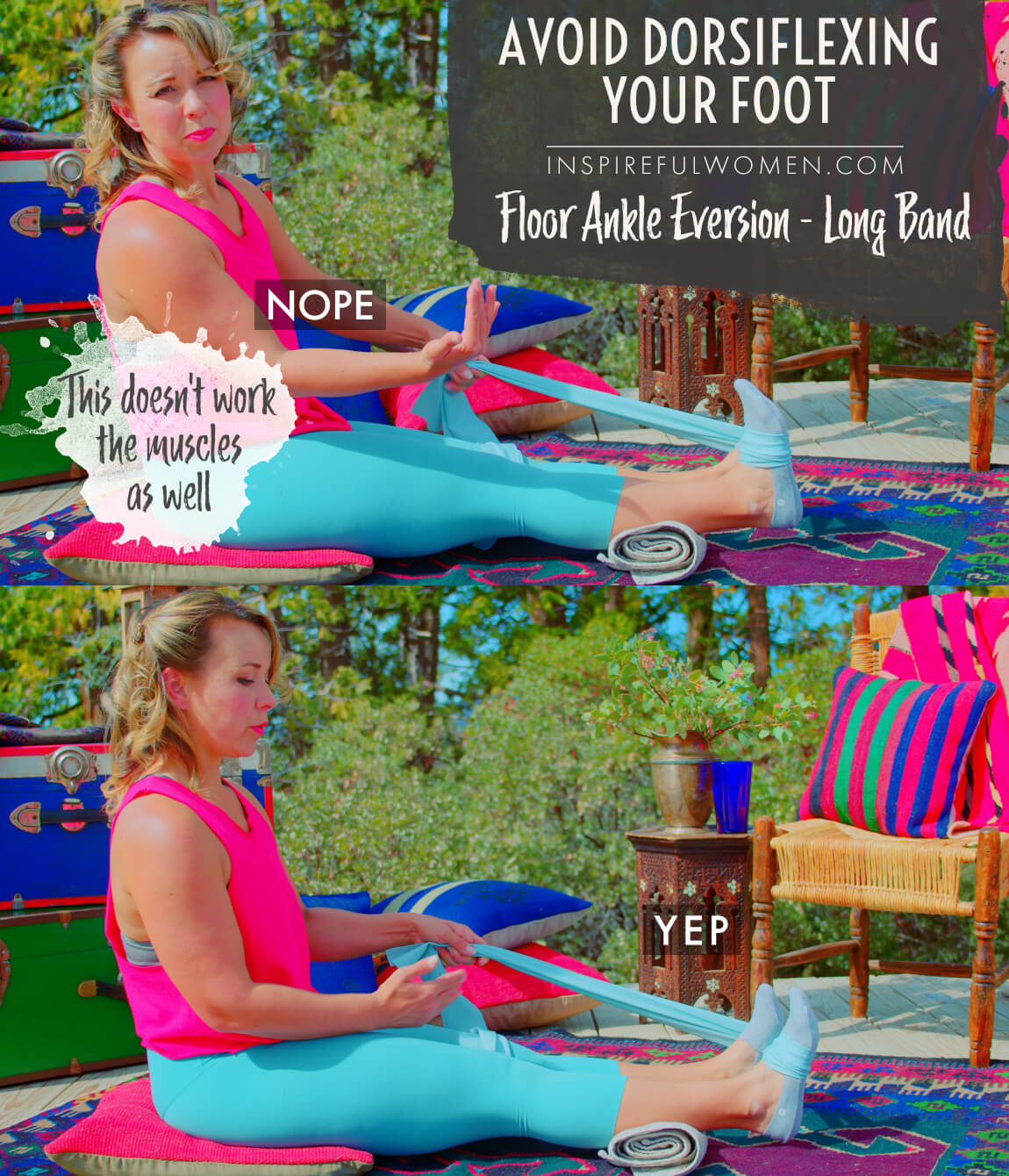
4. Avoid Pointing Toes
AVOID: Pointing toes down (plantar flexion) by bending at the ankle to lift the forefoot.
WHAT TO DO:
- The ankle should not be bent up or pointed down - the sole of the foot should be parallel to the wall in front of you (when seated on the floor).
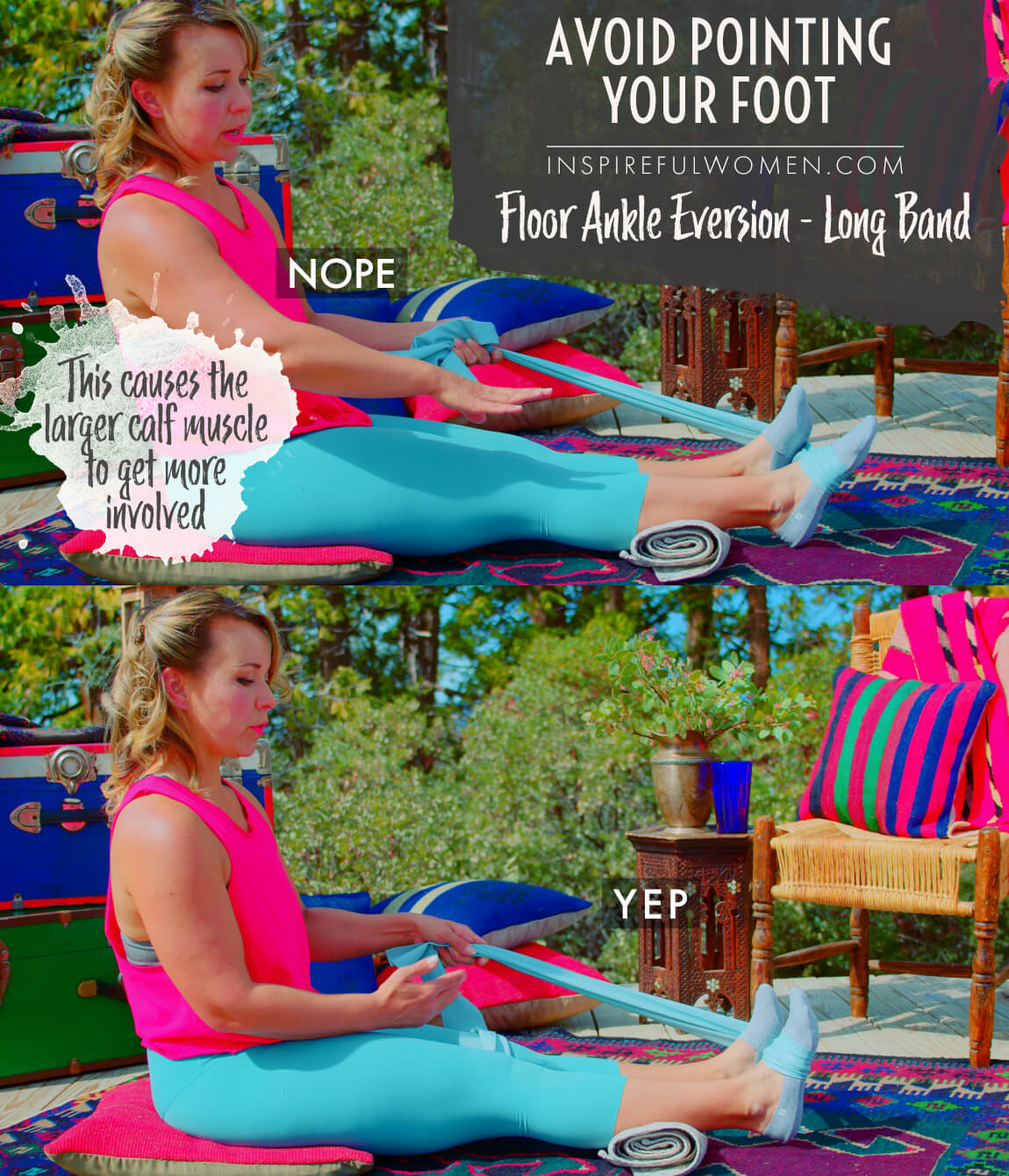
VARIATIONS
VARIATIONS
VARIATIONS OF Floor-Seated Ankle Eversions - Long Band
Sitting On Pillow
Sitting On Pillow Ankle Eversion - Long Band
Sitting on a pillow can be helpful if you are experiencing too much pull in your hamstrings or discomfort in your low back.

SCIENCY STUFF
SCIENCY STUFF
SPIFFILICIOUS FACTS ABOUT MUSCLES & MOVES
The peroneal muscles (longus, brevis and tertius) lie on the outside of the lower leg. Their main job is ankle eversion which pulls the foot into a pronated position. This happens with a normal gait, the weight transfers from the outside of the foot to the inside of the foot. Interestingly, the peronei also help to support the medial arch of the foot. This seems contradictory, but the tendon of the muscles runs under the arch of the foot and is attached to the base of the first metatarsal. Metatarsals are the long bones of the foot that run from the small ankle bones to each toe. There are five metatarsals in each foot.
The feet are made up of 28 bones that form 25 joints, controlled and supported by 29 muscles (roughly - the count can be different depending on the source). These joints and muscles are no different than the joints and muscles in the other parts of the body. You can learn how to move them and strengthen the muscles to keep your feet healthy and strong. The muscles that move the sole of the foot in (inversion) and out (eversion) are very important for keeping a nice arch in your foot while standing, and for the movement of the arch for shock absorption to protect the body from high impact.
ALLLL MUSCLES & WHEN
ALL MUSCLES WORKING & WHEN DURING THE Floor-Seated Ankle Eversion - Long Band
The peroneus longus, brevis, tertius and extensor digitorum longus contract concentrically to evert the foot. The same muscles work eccentrically to control the return to neutral against the pull of the band.
PIN IT FOR LATER!
